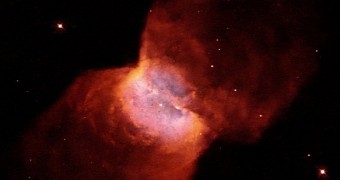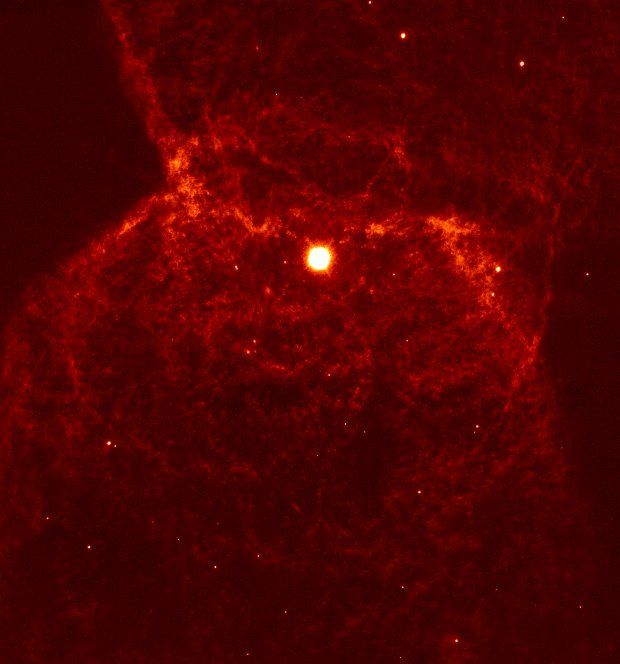Planetary nebula NGC 2346 sits at a distance of some 2,300 light-years from us, in the constellation Monoceros. It's shaped like a butterfly and measures around one-third of a light-year across.
NGC 2346 was first spotted and documented by astronomer William Herschel back in 1785. Now, a team of researchers with the National Optical Astronomy Observatory in the US have produced the highest resolution image yet of the distribution of material in the two gaseous lobes that comprise it.
The view, available below, was obtained using the Gemini Observatory telescope in Chile and shows knots and filaments in the molecular hydrogen gas that comprises the planetary nebula.
“The team detected previously unresolved knots and filaments of molecular hydrogen gas - details that no other telescope on the ground or in space, not even the Hubble Space Telescope, has been able to resolve,” reads a report detailing this project to study NGC 2346 and reveal its makeup.
The scientists suspect that the knots and the filaments clumping this planetary nebula are the result of interactions between gas of different densities, kind of like when oil is added to water.
NGC 2346 hides two stars at its core
Planetary nebulae are basically the remains of giant stars that have reached the end of their life. What's interesting is that NGC 2346 was not created by just one star, astronomers explain.
Instead, the core of this planetary nebula in the constellation Monoceros has been shown to hide a so-called binary system, i.e. two stars gravitationally bound to one another.
The stars orbit each other once every 16 days and are nestled closer together than Mercury is to our Sun. NGC 2346 came into being when one of these fiery orbs aged and began to shed its outer layers.
When the binary system was still young, both stars were twice as massive as our Sun. These days, however, the dying star has lost so much material that it weighs merely 0.3 to 0.7 solar masses.
Astronomers expect that, in the years to come, NGC 2346's appearance will drastically change as the material comprising it will drift away into space.

 14 DAY TRIAL //
14 DAY TRIAL // 

